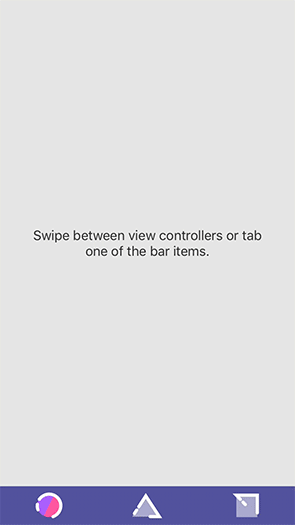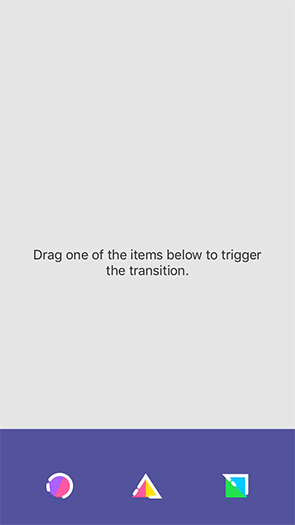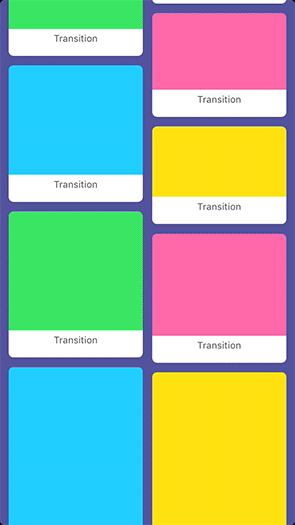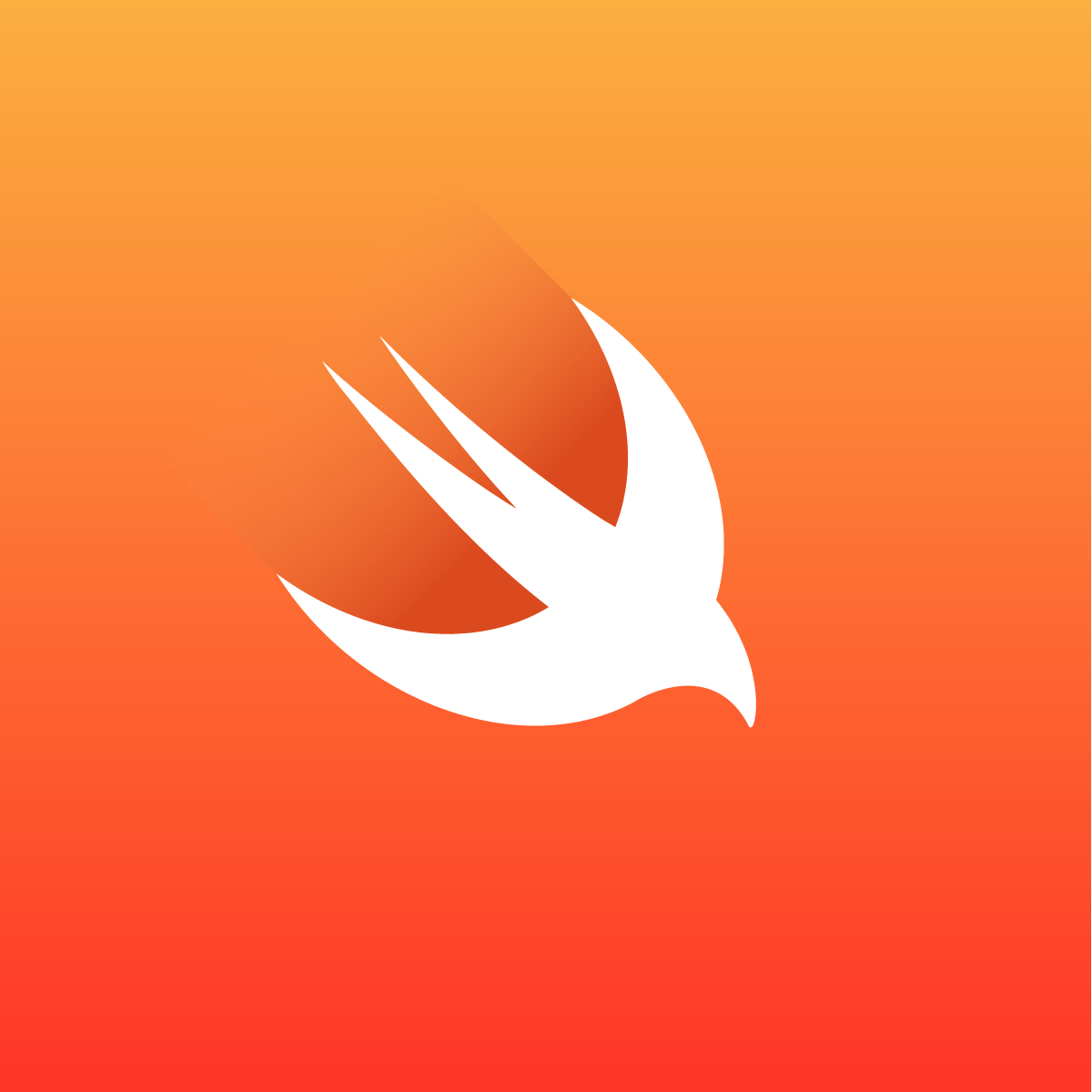- August 28, 2025
- Mins Read
Introduction
Transition is a library that helps you build iOS view controller transitions. Implementing a nice interactive custom view controller transition involves quite a number of components. You have to implement the correct delegates, handle the switching between passive animation and active interaction phases, ensure the timing is right, think of interruption and cancellation, keep responsibilities separated… It quickly gets messy! This is where Transition helps you out: you just define the animation and the interaction, Transition ties it all together.
In short:
- You specify single-responsibility components (animation, interaction, …)
- Transition ties them together
Examples
There are several examples (which can be found in Examples/):
- SimpleExample: implements the basic steps explained in this README.
- TabBarTransitionsExample: shows you how to implement custom
UITabBarControllertransition animations with custom interaction. - ModalTransitionsExample: shows you how to implement custom modal transition animations that include interaction with a shared element.
- BuiltInTransitionsCatalog: shows a small collection of built-in transition animations.
To run an example project, clone the repo, navigate to one of these example directories, and run pod install from that directory first.



Requirements
- iOS 10.0+
- Swift 3.0+
Usage
1. The AnimationLayer
The AnimationLayer is the most essential part of setting up a transition; without it, there’ll be no animation. An AnimationLayer is a simple struct that takes two arguments:
1. Animation function
This is a simple closure with the signature () -> Void. In this closure you define your animation, just as you would with a UIView or UIViewPropertyAnimator animation. For each AnimationLayer, Transition will instantiate a UIViewPropertyAnimator, passing it your animation block.
2. TimingParameters
This defines the timing of your animation. It must be a UITimingCurveProvider, such as an instance of UICubicTimingParameters or UISpringTimingParameters.
3. Animation Range
Additionally, you can set an AnimationRange, which by default is set to AnimationRange.full. This range defines the start and end point (as fractions of the total transition animation duration) between which your AnimationLayer‘s animation will run.
You create your AnimationLayer as follows:
let animationLayer = AnimationLayer(timingParameters: UICubicTimingParameters(animationCurve: .easeOut)
animation: { topView?.transform = targetTransform })
😦 … Hey, wait! Where do that topView and targetTransform come from?
2. The TransitionAnimation
Your AnimationLayer is defined as a part of your TransitionAnimation. This represents all (non-interactive) animation during a transition. The TransitionAnimation protocol exposes an array of AnimationLayers. Additionally it contains two functions; one for setup and one for completion. Before starting animation, your setup function will be called, passing you the transitioningContext that among others contains the fromView and toView in the transition. The completion function is called when the entire transition completes, allowing you to clean up any temporary views added in the setup.
class SimpleAnimation : TransitionAnimation {
private weak var topView: UIView?
private var targetTransform: CGAffineTransform = .identity
func setup(in operationContext: TransitionOperationContext) {
let context = operationContext.context
let isPresenting = operationContext.operation.isPresenting
// We have to add the toView to the transitionContext, at the appropriate index:
if isPresenting {
context.containerView.addSubview(context.toView)
} else {
context.containerView.insertSubview(context.toView, at: 0)
}
context.toView.frame = context.finalFrame(for: context.toViewController)
// We only animate the view that will be on top:
topView = isPresenting ? context.toView : context.fromView
let hiddenTransform = CGAffineTransform(translationX: 0, y: -context.containerView.bounds.height)
topView?.transform = isPresenting ? hiddenTransform : .identity
targetTransform = isPresenting ? .identity : hiddenTransform
}
var layers: [AnimationLayer] {
return [AnimationLayer(timingParameters: AnimationTimingParameters(animationCurve: .easeOut), animation: animate)]
}
func animate() {
topView?.transform = targetTransform
}
func completion(position: UIViewAnimatingPosition) {}
}
🤔 … But what about duration?
3. The Transition
You just defined the animation of your transition. You now create a Transition struct that has an animation part (your TransitionAnimation) and an optional sharedElement part, which you can see implemented in the Modal and Navigation examples. And the Transition has a duration!
let transition = Transition(duration: 2.0, animation: SimpleAnimation())
😬 … And where do I put that transition?
4. The TransitionController
Almost there. Say you want to use this transition for UINavigationController transitions. Let’s make a convenience object that isolates transition-related functionality for a navigationController:
class MyNavigationTransitions {
let transitionController: TransitionController
let transitionsSource = MyNavigationTransitionSource()
init(navigationController: UINavigationController) {
transitionController = TransitionController(forTransitionsIn: navigationController, transitionsSource: transitionsSource)
}
}
class MyNavigationTransitionSource : TransitionsSource {
func transitionFor(operationContext: TransitionOperationContext, interactionController: TransitionInteractionController?) -> Transition {
return Transition(duration: 0.5, animation: SimpleAnimation())
}
}
The TransitionController takes responsibility for animating transitions in the given navigationController, using an external TransitionsSource to provide operation-specific transitions (the operation – in this case push or pop – can be obtained from the TransitionOperationContext). This means you can return different transition animations for push and pop. You can also provide a single animation that behaves differently depending on the operation (see the SimpleAnimation).
Now, initialize your MyNavigationTransitions, passing it your navigationController.
🤓 … Is that it?
Yes!
😎
At least, for custom view controller transition animations. There’s a lot more that’ll help you set up a custom interaction gesture and a shared element that can move between the transitioning views.
The above steps are implemented in the SimpleExample that can be found in the Examples/ directory.
Further reading
Installation
Transition is available through CocoaPods. To install it, simply add the following line to your Podfile:
pod ‘Transition’
GitHub
- August 27, 2025
- SwiftUI
This package provides you with an easy way to show tooltips over any SwiftUI view, since Apple does not provide ...
- August 27, 2025
- SwiftUI
- Uncategorized
SimpleToast is a simple, lightweight, flexible and easy to use library to show toasts / popup notifications inside iOS or ...
- August 27, 2025
- SwiftUI
Create Toast Views with Minimal Effort in SwiftUI Using SSToastMessage. SSToastMessage enables you to effortlessly add toast notifications, alerts, and ...




